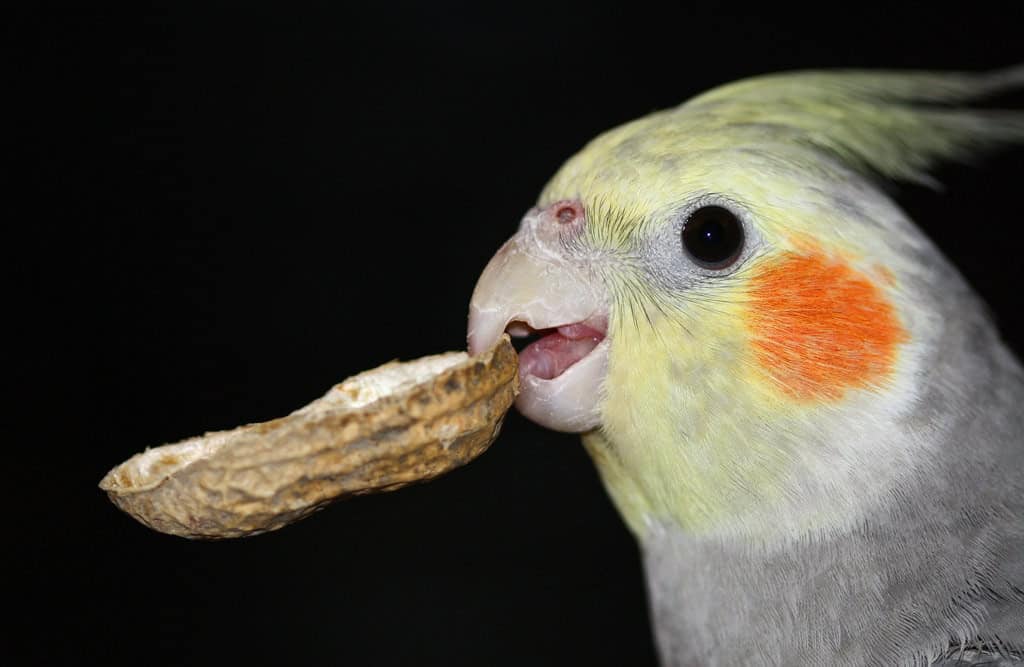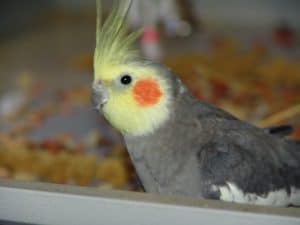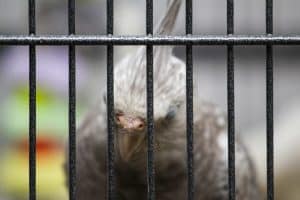Have you ever wondered what tricks can you teach your cockatiel? These charming birds are not only known for their beauty but also for their intelligence and capacity to learn various tricks. Teaching your feathered friend can enhance your bond and provide them with mental stimulation, keeping their minds sharp and their spirits high.
Starting with simple tricks and gradually moving to more complex ones can turn training sessions into fun and rewarding experiences. Whether it’s mastering a friendly wave or learning to sing a tune, the possibilities are vast. Let’s delve into how you can tap into your cockatiel’s potential and transform your interactions into an engaging spectacle of tricks and skills.
Preparing Your Cockatiel for Training
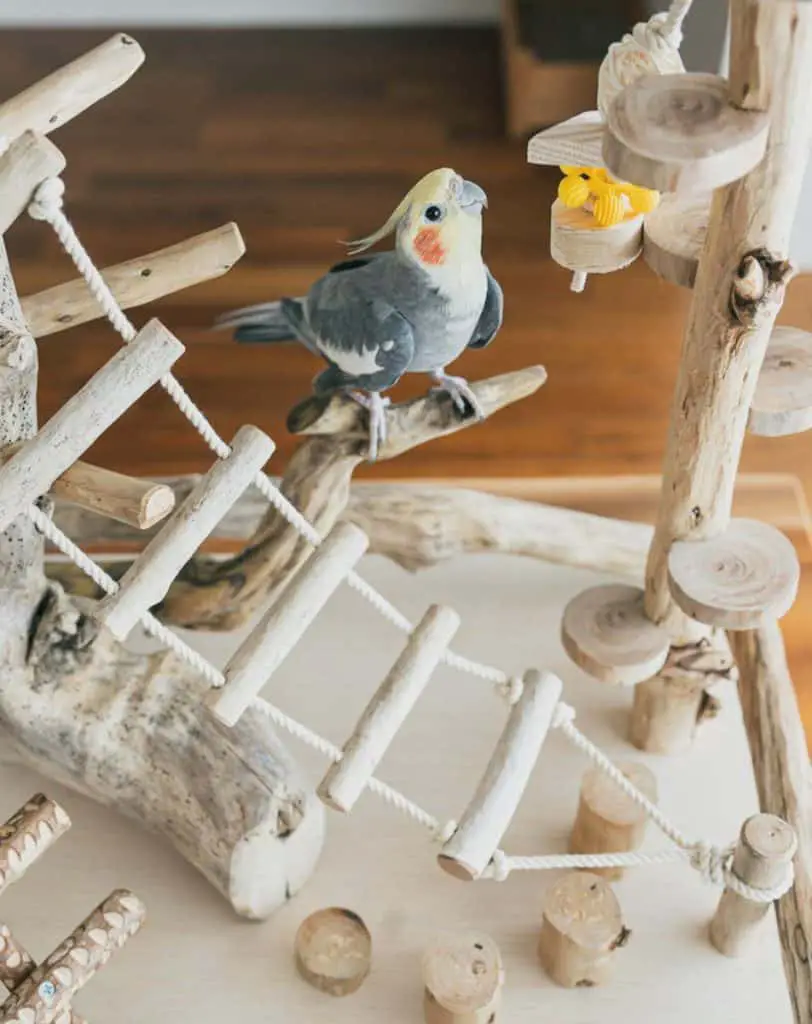
Training your cockatiel involves more than just teaching tricks; it’s about forming a trusting relationship and ensuring your bird feels comfortable in its environment. With the right preparation, the training process can be both enjoyable and successful, creating a deeper bond between you and your pet.
Build Trust with Your Bird
The foundation of successful training rests on trust. Start by spending time with your cockatiel every day, talking softly and offering treats from your hand. Sunflower seeds or small pieces of fruit make great rewards and help associate your presence with positive experiences.
Gradually, as your cockatiel becomes more accustomed to your presence, it will begin to approach you on its own. Consistent, gentle handling paired with positive reinforcement will enhance this trust, making your cockatiel more receptive to learning tricks.
Create a Comfortable Environment
Creating the right environment is crucial for your cockatiel’s learning. Ensure the training takes place in a quiet area with minimal distractions to help your cockatiel concentrate. The cage should be large enough for flight and exploration, furnished with perches at different levels.
This setup helps simulate a natural habitat, reducing stress and promoting a calmer, more focused bird. Remember, a comfortable cockatiel is more likely to engage positively during training sessions, increasing the likelihood of success in teaching new tricks.
Basic Training Techniques
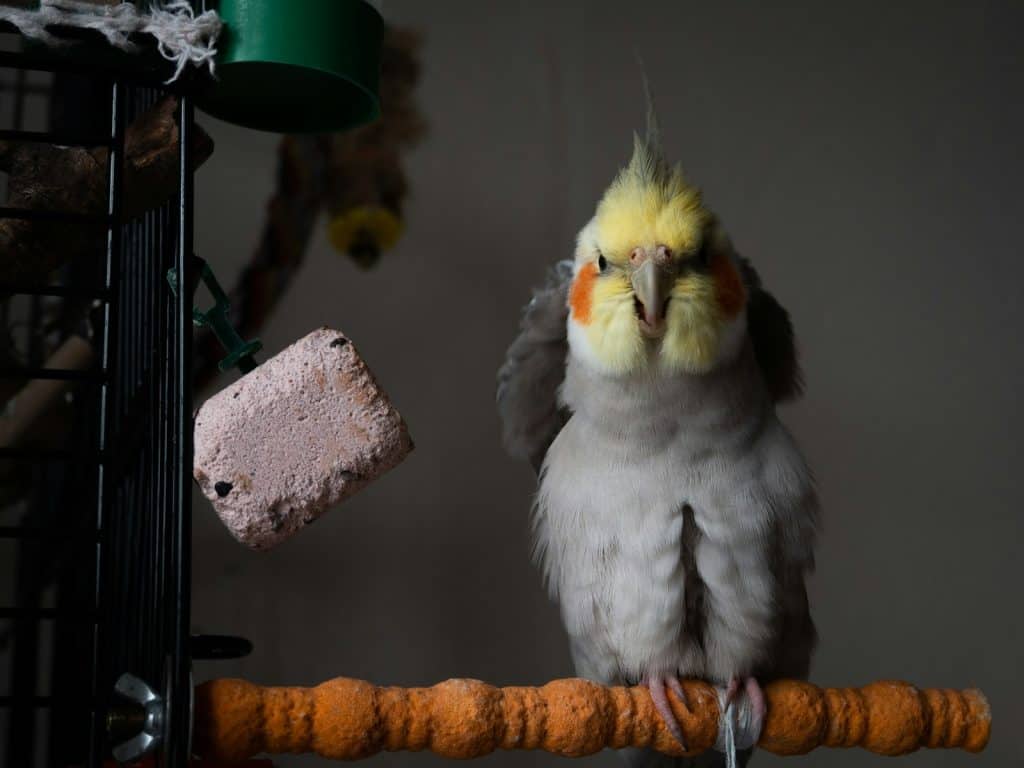
When teaching your cockatiel new tricks, starting with basic training techniques enhances the learning experience. These foundations pave the way for a rewarding session for both you and your pet.
Positive Reinforcement
Positive reinforcement emerges as a key technique in bird training, particularly with cockatiels. Essentially, it involves rewarding desired behaviors, which encourages your bird to repeat them. Begin by offering treats such as sunflower seeds or small bits of fruit every time your cockatiel performs a trick correctly. Over time, you can introduce verbal praise or gentle petting as additional forms of reward.
It’s important to immediately reward your cockatiel after it performs the desired behavior. This timing helps your bird associate the action with the reward. Gradually, you might start to delay the treats and increase verbal praise, helping your cockatiel learn that the trick itself leads to positive outcomes. Consistency in the type of treat and the timing of the reward is crucial for effective positive reinforcement.
Consistency and Patience
Consistency is paramount when training your cockatiel. Set regular training sessions, ideally at the same time each day, to establish a routine that your bird can expect and adapt to. Each session should last about 5 to 10 minutes to maintain your cockatiel’s attention without causing overstimulation or fatigue.
Patience plays an equally vital role in the training process. Cockatiels, like many birds, learn at their own pace, which means some tricks might take longer to master than others. If your cockatiel struggles with a new trick, break it down into smaller steps and reinforce each successful move with a treat. Consistent, patient training reinforces learning and strengthens the bond between you and your pet, making each session enjoyable and productive.
Simple Tricks to Teach Your Cockatiel
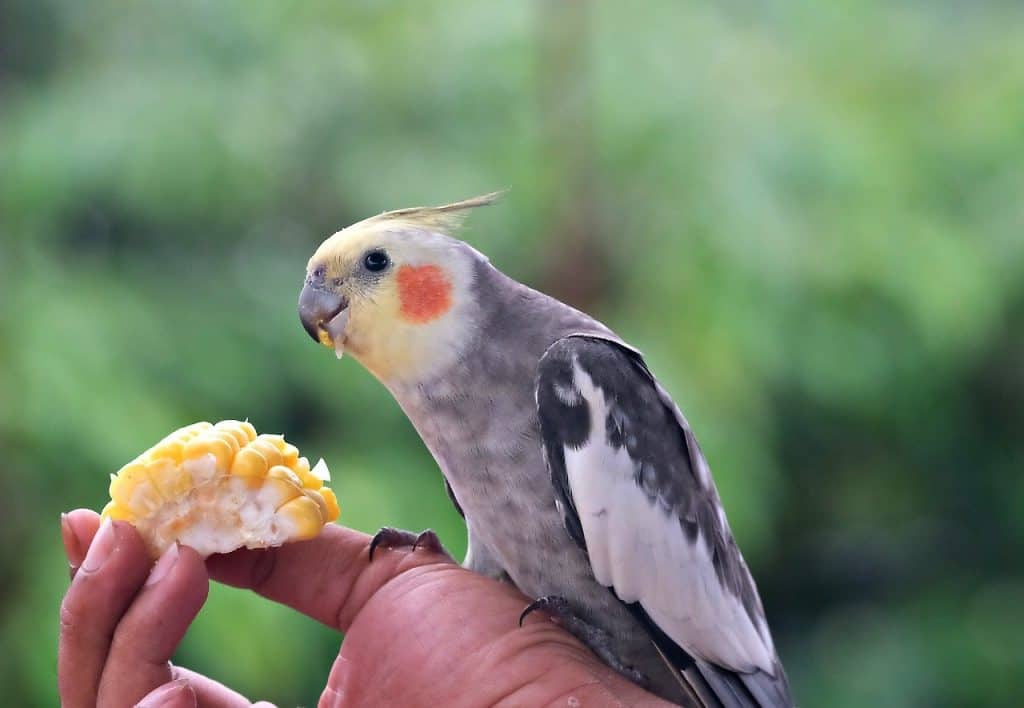
Teaching your cockatiel simple tricks can be a fun way to enhance your bond and keep your pet engaged. Using proven techniques ensures effective training, making the process enjoyable for both you and your bird.
Step Up Command
The Step Up command is fundamental for handling your cockatiel safely and effectively. Start by holding your finger, or a perch, in front of your bird’s feet. Issue the command “Step Up” with a clear, calm voice. If the bird hesitates, gently press your finger against its lower chest to encourage stepping forward.
It’s crucial to reward your cockatiel with treats or praise immediately after it performs the action correctly. Consistency is key, so practice this command daily to help your bird learn that stepping up is a positive experience.
Wave Hello
Teaching your cockatiel to ‘Wave Hello’ serves as a delightful trick to impress family and friends. Begin by training your bird to follow a treat held in your hand. Once your cockatiel is comfortable with targeting your hand, you can transition to the waving trick. Hold a treat just out of reach and give the command “Wave.”
As your bird lifts its foot to reach the treat, say “Good!” or provide a verbal cue like “Hello!” Reward your cockatiel immediately after the wave, reinforcing the behavior with positive reinforcement such as sunflower seeds or verbal praise. Repeat this trick in short, frequent sessions for better retention and to maintain your bird’s interest throughout the training process.
- 11 PIECES BIRD TOYS: The bird toys include 11Pieces parrot toys to meet most bird's needs.Crisp bells' sounds and colorful wooden toys will catch the attention of your birds,they will spend most time to play with their interesting new toys. they are suitable for bird sports,standing,climbing, playing, chewing, resting,etc. It's the perfect gift for your bird friends.
- FOR VARIOUS BIRDS:Our bird toys provide your birds a good elevated place to meet your birds' natural needs; Make most birds do exercise ,strengthen their muscles, exactly suit for small parakeets, cockatiels, conures, macaws, parrots, love birds, Mynahs, finches ,pineapples ect.
- SAFE: These small interesting Bird toys are made of natural wood that dyed with edible color,which ensure the health and safety of your pet birds. They are completely handmade, very durable and bite-resistant. They can easily draw the attention of your pet parrots in a short time,climbbing and exploring.
- EASY TO INSTALL: All bird cage toys come with an hook which can attaches to the top of the bird cage easily.With these interesting bird toys attached in their cage,saving space and decorating the cage, your birds will have fun every day.
- GUARANTEE: If you are not satisfied with our products, just return it and a refund will do; we provide 24 hours customer services, please feel free to contact us.
Advanced Tricks for Your Cockatiel
Once your cockatiel has mastered basic commands, it’s time to elevate their training with some advanced tricks that are not only fun but also deepen the bond between you and your bird. These advanced tricks build on the foundational skills covered previously, using positive reinforcement as a core principle.
Whistling Simple Tunes
Teaching your cockatiel to whistle simple tunes involves gradually introducing them to different sounds. Start by consistently whistling a short, simple melody during your bonding times. If you consistently repeat the tune while in your cockatiel’s presence, your bird begins to recognize and eventually mimic the sound.
Offering treats like sunflower seeds immediately after your cockatiel attempts to whistle reinforces this behavior, effectively using positive reinforcement. Over time, increase the complexity or length of the tune as your cockatiel becomes more proficient. This trick not only entertains but also stimulates your cockatiel’s cognitive abilities.
Flying to You on Command
Training your cockatiel to fly to you on command enhances your interactive sessions and helps maintain their physical health. Begin by encouraging your cockatiel to fly short distances—starting from your finger to a nearby perch. Use a hand signal, such as an extended arm or two fingers pointing to your desired landing spot, to direct their flight.
Reward them with their favorite treat and verbal praise upon successful landing. Gradually increase the distance between the starting point and your position, ensuring each successful attempt is met with a reward. This training not only improves their flying skills but also reinforces their trust and responsiveness to your commands.
Final Thoughts: What tricks can you teach your cockatiel?
Teaching your cockatiel new tricks can be a rewarding experience that strengthens your bond and enhances your pet’s mental and physical health. Remember to stay patient and consistent using positive reinforcement. With time and practice your feathered friend will not only perform tricks but also thrive in a stimulating and loving environment. Embrace each small step of progress and enjoy the journey of growth with your cockatiel.
Other suggested articles:
